Adding plants to your kitchen not only enhances its aesthetics but also provides several practical benefits. Plants can help purify the air by removing toxins, contribute to a calming and refreshing atmosphere, and even serve culinary purposes by providing fresh herbs for cooking.
Additionally, greenery in your kitchen can boost your mood and make the space feel more inviting. For your help I am doing this provided you 20 Best Plants for Your Kitchen.
1. Basil
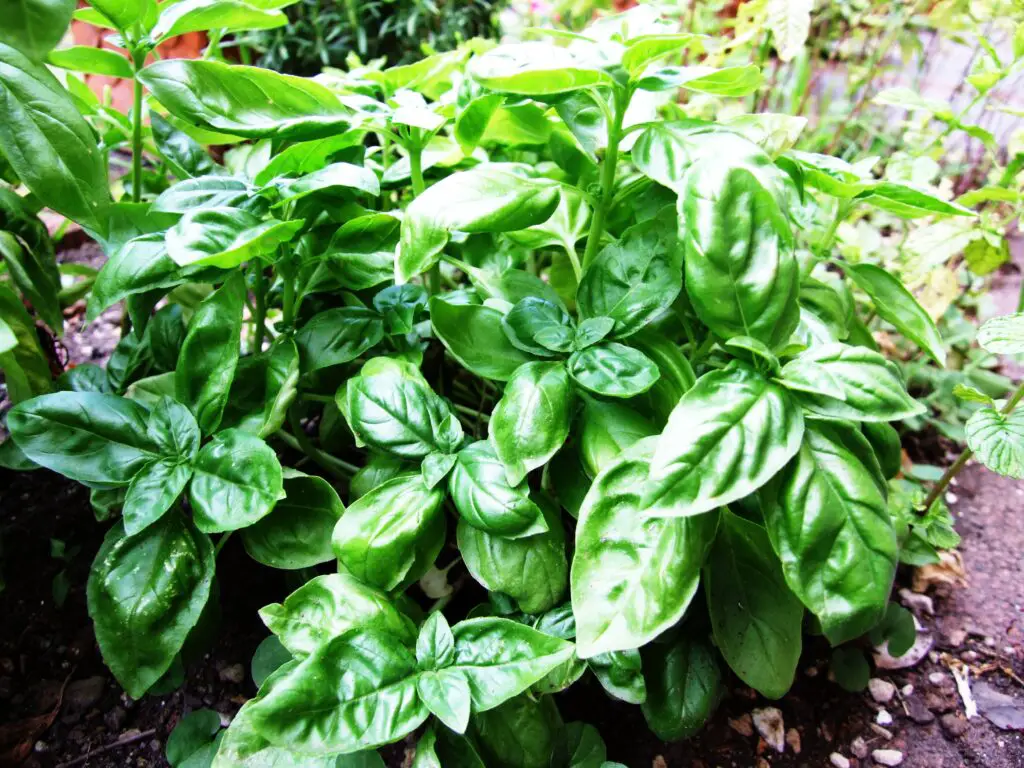
Basil a fragrant herb essential for Italian cuisine, basil thrives in sunlight and warm temperatures. Its fresh, slightly sweet flavor enhances pasta, salads, and sauces, making it a kitchen staple
- Caution: Pregnant or breastfeeding women should consult a healthcare provider before consuming large amounts of basil, as it may interfere with hormonal balance.
- Watering: Basil requires consistent watering but should not be overwatered.
- Pros: Easy to grow Basil is relatively low-maintenance and adapts well to indoor and outdoor conditions.
- Cons: Basil requires plenty of sunlight (6+ hours a day), which can be difficult in darker environments.
2. Mint
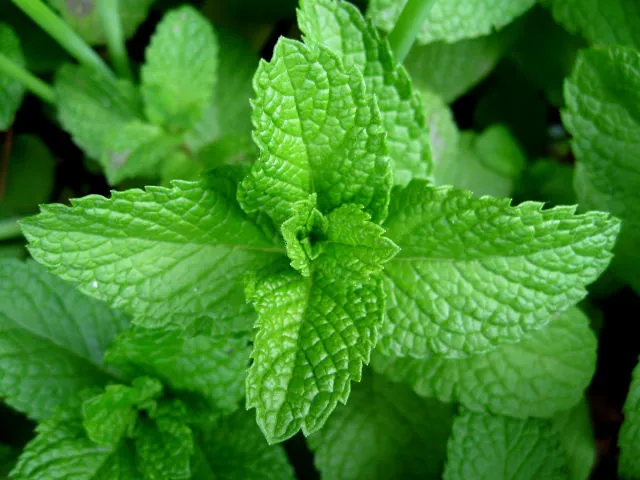
Mint is a versatile herb known for its invigorating, refreshing scent. It thrives in moist, well-draining soil and is incredibly easy to grow, whether indoors or outdoors. Mint prefers partially shaded areas but can tolerate some sunlight.
It spreads quickly, so it’s best to plant it in containers to prevent it from overtaking other plants. Regular watering is essential to keep the soil moist, especially in warmer weather. Whether used in drinks, dishes or as a natural remedy, mint is a fragrant and useful addition to any space.
- Benefits: The refreshing scent of mint is known to improve concentration and reduce mental fatigue.
- Caution: Mint can interact with certain medications, particularly those for acid reflux or heartburn, so use cautiously if on these treatments.
- Watering: Mint thrives in moist, well-draining soil. Water regularly to keep the soil consistently moist but not soggy. Mint is relatively tolerant of occasional dryness, but it should not be allowed to dry out completely.
3. Thyme
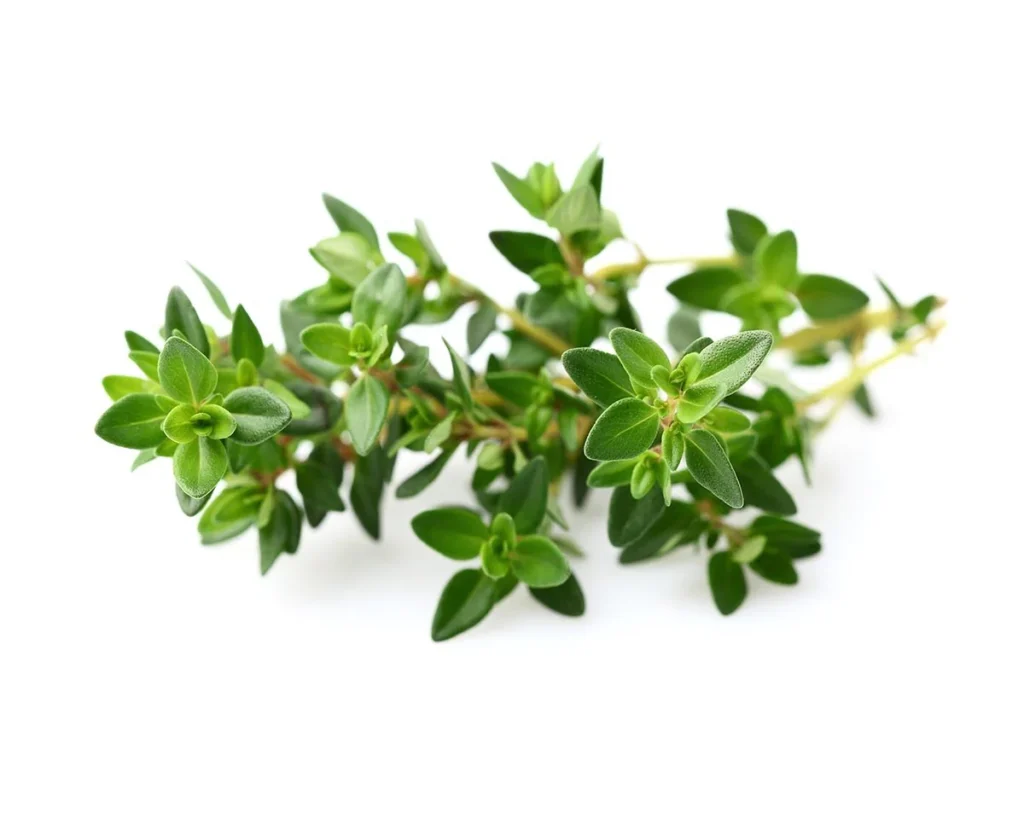
Thyme is a fragrant, hardy herb that thrives in dry, well-draining soil and full sunlight. Known for its earthy, aromatic flavor, thyme is a staple in many savory dishes, particularly Mediterranean and roasted recipes.
It requires minimal watering once established and can tolerate drought conditions, making it ideal for gardens with less frequent rainfall. Its small, delicate leaves add depth to soups, stews, marinades, and more.
Thyme is a low-maintenance herb that works well in both pots and garden beds, requiring little attention while offering robust flavor.
- Benefits: Thyme has natural antibacterial, antifungal, and antiviral qualities, which can support oral health and fight infections.
- Caution: Pregnant women should limit thyme consumption, especially in large amounts, as it may stimulate contractions. Always consult a healthcare provider if unsure.
- Watering: Thyme prefers dry, well-draining soil and can tolerate drought once established. It doesn’t require frequent watering; allows the soil to dry out between waterings.
4. Rosemary
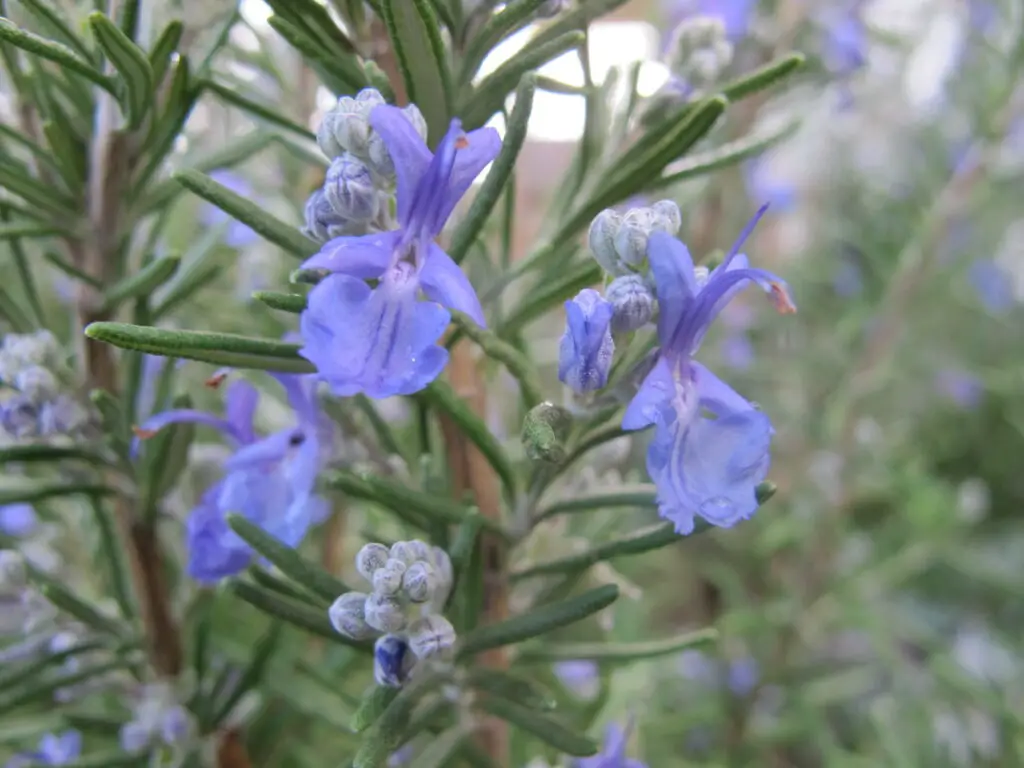
Rosemary is a robust, evergreen herb known for its aromatic, pine-like flavor, making it a favorite in Mediterranean cooking. It thrives in full sun, requiring at least 6-8 hours of direct sunlight each day, and is well-suited for dry, well-draining soil.
This hardy herb is drought-tolerant once established, making it relatively low-maintenance and a great choice for gardens or containers. Its intense, earthy flavor enhances roasted meats, vegetables, soups, and breads, while also offering a variety of health benefits like supporting cognitive function and immune health.
- Caution: Some individuals may experience allergic reactions such as skin irritation or respiratory issues.
- Watering: Rosemary prefers dry, well-draining soil and should not be overwatered. Water it deeply, allowing the soil to dry out between waterings.
- Pros: Rosemary is a hardy herb that thrives with minimal care and can withstand dry conditions.
- Cons: In outdoor gardens, rosemary can spread over time and become a bit of a nuisance if not contained.
5. Parsley
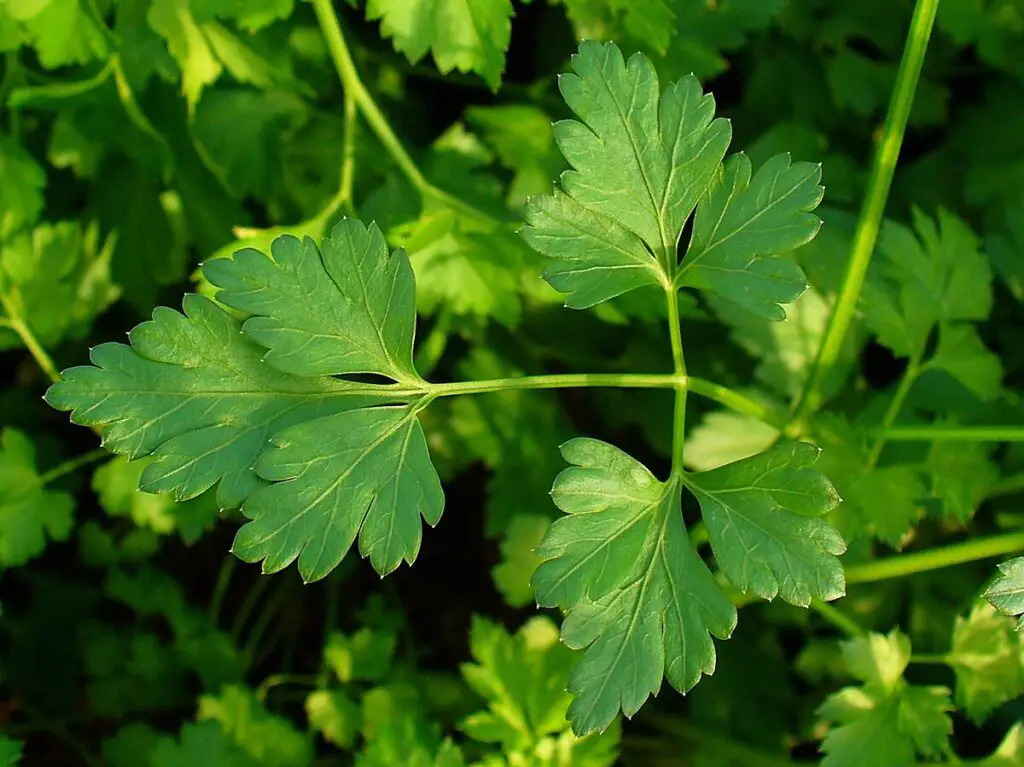
Parsley is a highly versatile herb, commonly used as a garnish or main ingredient in various dishes like salads, soups, and sauces. It thrives in both outdoor gardens and indoor containers, making it an excellent option for growing year-round.
Parsley requires moderate sunlight and well-draining soil to flourish. It’s rich in vitamins A, C, and K, and its antioxidants help promote overall health. With its mild, fresh flavor, parsley can easily be added to almost any dish, offering a nutritional boost and a bright, green touch to your meals.
- Caution: Parsley contains high levels of oxalates, which may pose a risk for individuals with kidney issues when consumed in excess.
- Watering: Parsley can tolerate slight drying between waterings, but it thrives best with moderate moisture levels.
- Pros: Great in a wide range of dishes, from salads and sauces to garnishes and smoothies.
- Cons: Parsley can take a while to mature, especially if grown from seed.
6. Aloe Vera
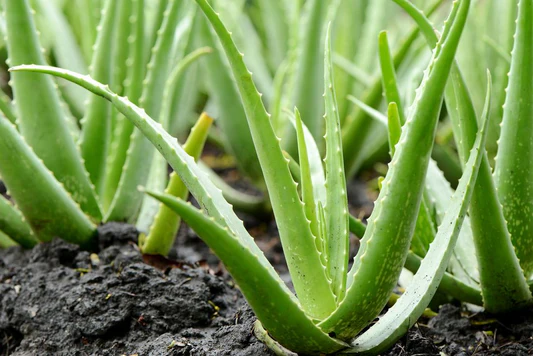
Aloe Vera is a low-maintenance, succulent plant known for its soothing and healing properties. It thrives in bright, indirect sunlight and requires minimal watering, making it an ideal indoor plant. Aloe Vera gel, derived from its leaves, is widely used for treating minor burns, cuts, and skin irritations due to its anti-inflammatory and cooling effects.
In addition to its skincare benefits, Aloe Vera is also used for promoting digestion and boosting the immune system when consumed in small amounts. This hardy plant is an excellent choice for those seeking a practical and beneficial addition to their home.
- Benefits: Aloe Vera is renowned for its ability to soothe and heal burns, cuts, and skin irritations due to its anti-inflammatory properties.
- Caution: Some people may experience allergic reactions when applying Aloe Vera to the skin, such as redness or itching. Always perform a patch test first.
- Watering: It thrives in well-draining, sandy soil or cactus mix, and it’s best to avoid any standing water in its container.
7. Spider Plant
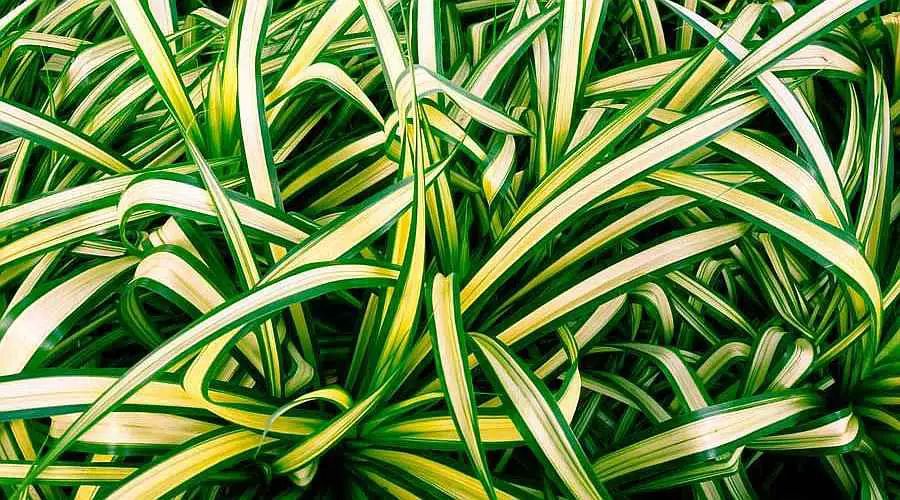
Known for its toxin-removal properties, the Spider Plant thrives in low light and is a great addition to any indoor space.
- Benefits: Spider plants release moisture into the air, which can help increase humidity levels in dry indoor environments.
- Caution: Spider plants can sometimes attract pests like aphids or spider mites, so regular monitoring is necessary.
- Watering: Spider plants prefer moderate watering. Water them thoroughly when the top inch of soil feels dry, but ensure that the pot has good drainage to avoid root rot. They do not like standing water, so allow excess water to drain.
- Cons: If the water contains fluoride or if the plant is overwatered, the tips of the leaves may turn brown.
8. Snake Plant
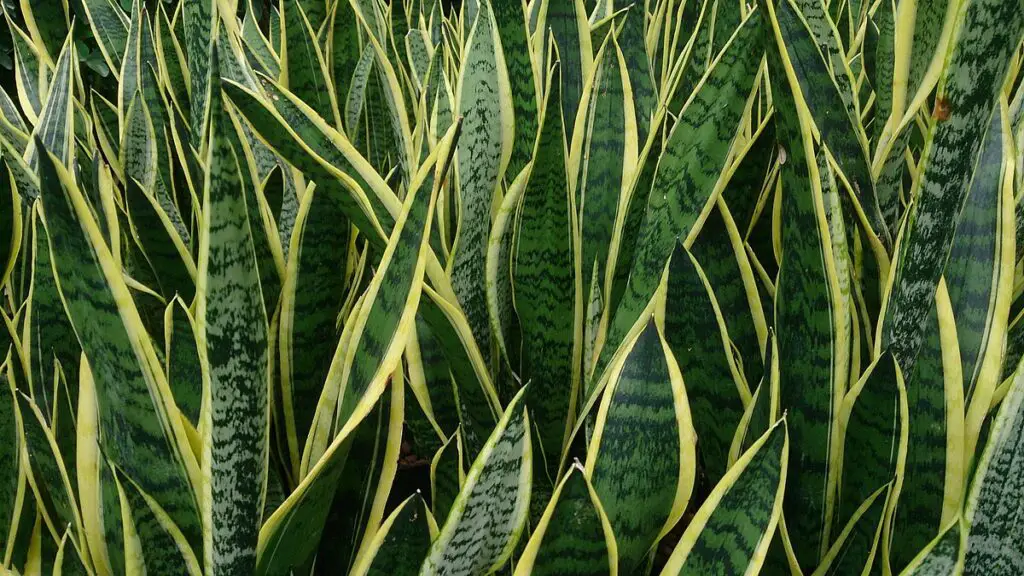
A low-maintenance plant that improves air quality by filtering toxins and releasing oxygen, making it perfect for any room
- Caution: Snake plants are prone to root rot if overwatered, as they store water in their thick leaves and require well-draining soil.
- Watering: Snake plants thrive on neglect and should only be watered when the soil is completely dry, typically every 2-3 weeks.
- Pros: Stores water in its leaves, making it highly resilient to periods of drought.
- Cons: If ingested, it can cause mild toxicity in cats and dogs, so pet owners should be cautious.
9. Pothos
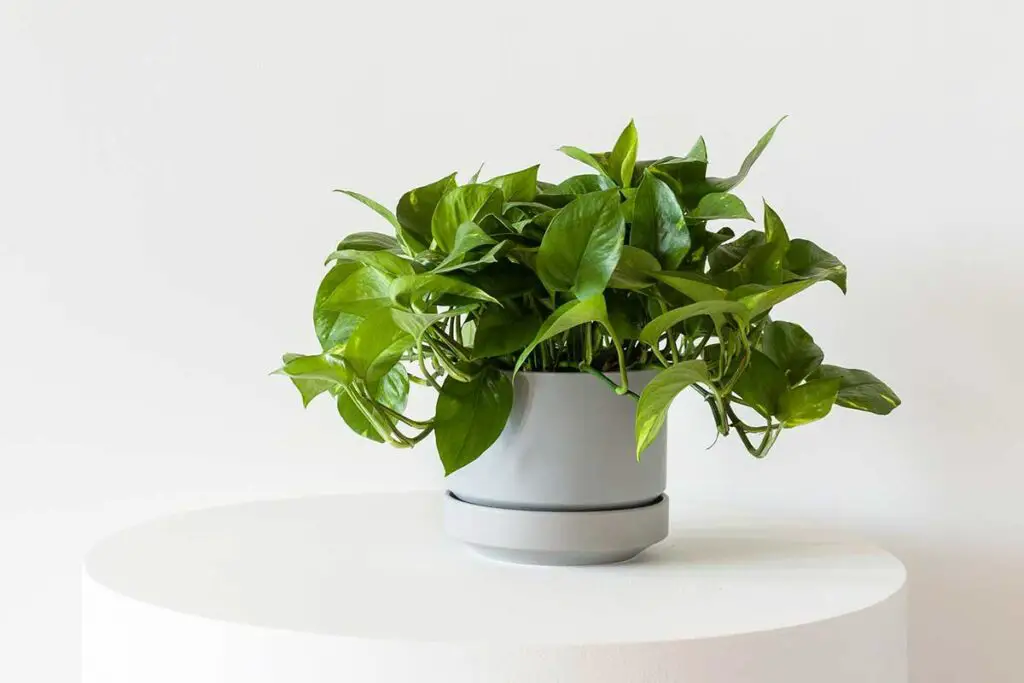
Thrives in low light and cascades beautifully, Pothos is a hardy, air-purifying plant that adds greenery and style to your home.
- Caution: Pothos contains calcium oxalate crystals, which can cause irritation, swelling, and digestive issues if ingested by pets or humans. Keep out of reach of children and animals.
- Watering: Water when the top inch of soil feels dry. Overwatering can lead to root rot, so ensure the soil drains well.
- Pros: Grows quickly and beautifully cascades from hanging pots or shelves.
- Cons: Harmful to pets and children if eaten, requiring careful placement.
10. Peace Lily
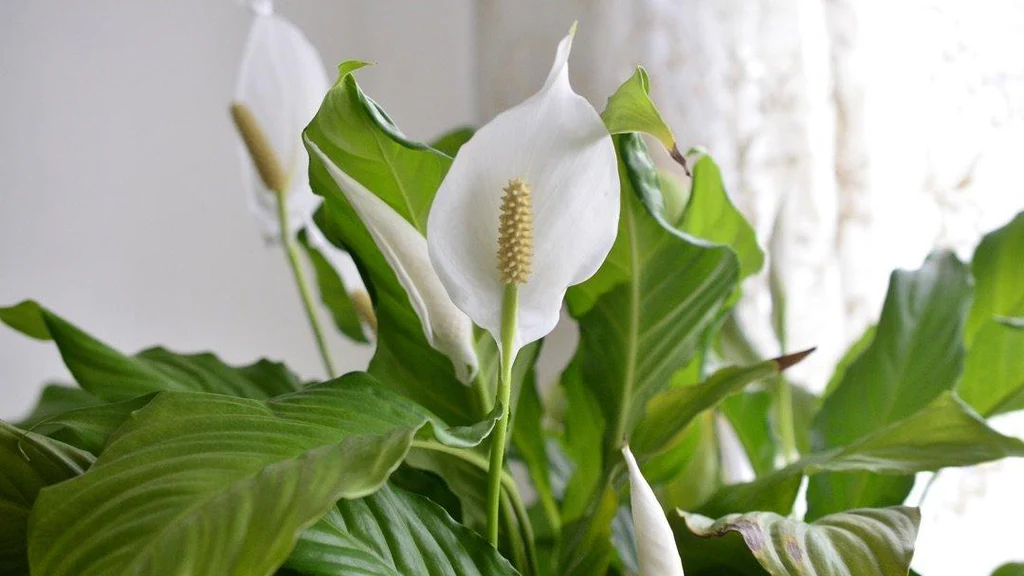
Peace Lilies absorb toxins and improve indoor air quality, while their love for humidity makes them ideal for bathrooms or kitchens.
- Caution: The pollen from Peace Lilies can trigger allergies in some individuals, especially those sensitive to airborne allergens.
- Watering: Reduce watering during colder months when the plant’s growth slows down.
- Pros: Peace Lilies remove toxins like formaldehyde, benzene, and ammonia from indoor air, improving air quality.
- Cons: Large leaves tend to collect dust, requiring occasional wiping to maintain their glossy appearance and health.
Related Topics:
11. Succulents
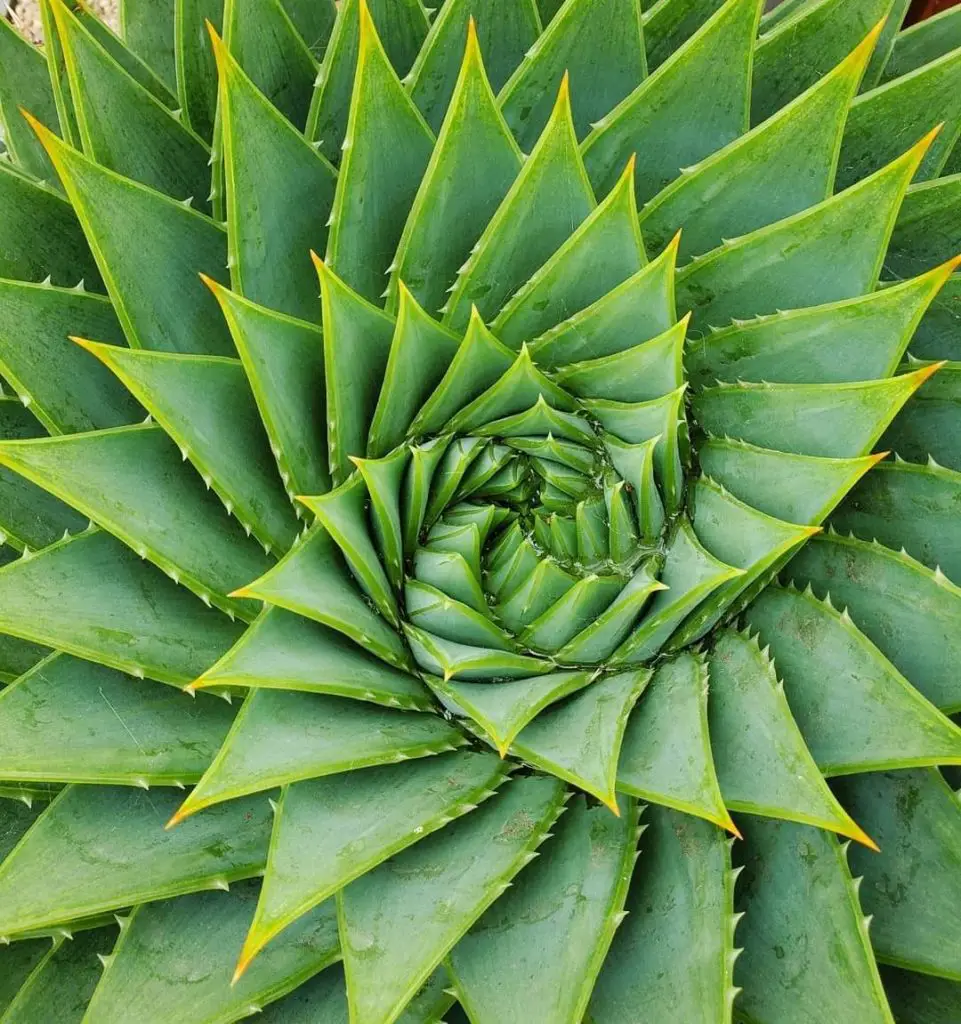
Low-maintenance and stylish, succulents store water in their leaves, making them perfect for busy plant owners.
- Watering: Use cactus or succulent mix and pots with drainage holes to prevent water retention.
- Pros: Available in a wide range of sizes, textures, and colors, adding aesthetic appeal to any space.
- Cons: Many succulents cannot tolerate frost and must be brought indoors during winter in colder climates.
12. Orchids
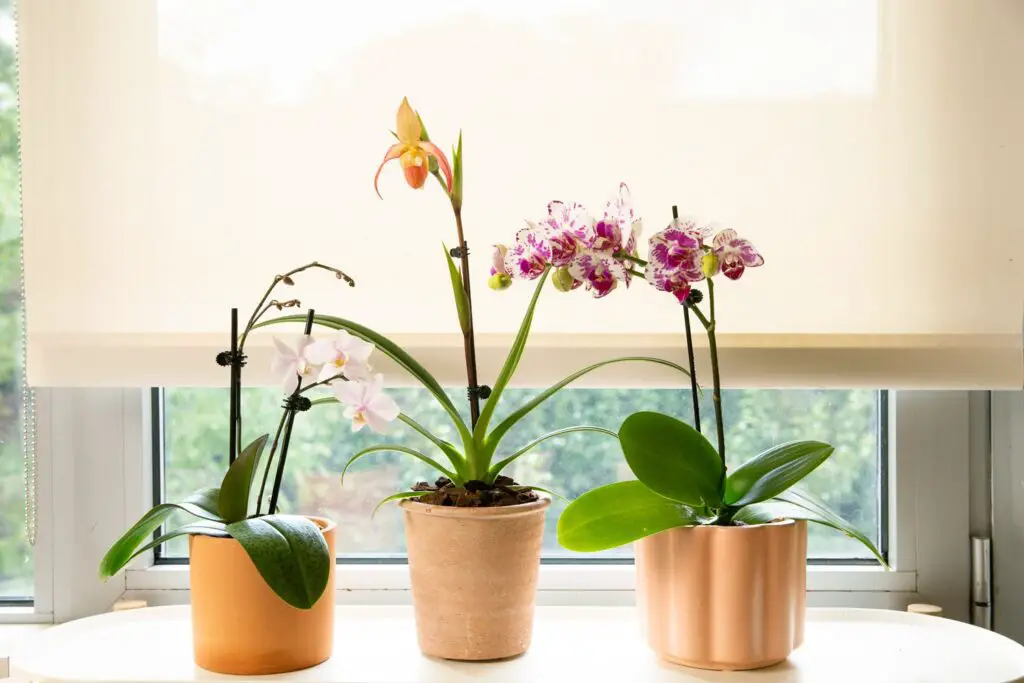
Elegant and delicate, Orchids thrive in humid kitchens and add a sophisticated touch to any space.
- Watering: thrive in humid environments (50–70% humidity); misting or placing a tray of water nearby can help maintain moisture.
- Pros: Orchids produce stunning flowers that can last for weeks or even months.
- Cons: Orchids need the right balance of light, humidity, and watering, making them a bit finicky for beginners.
13. Lucky Bamboo
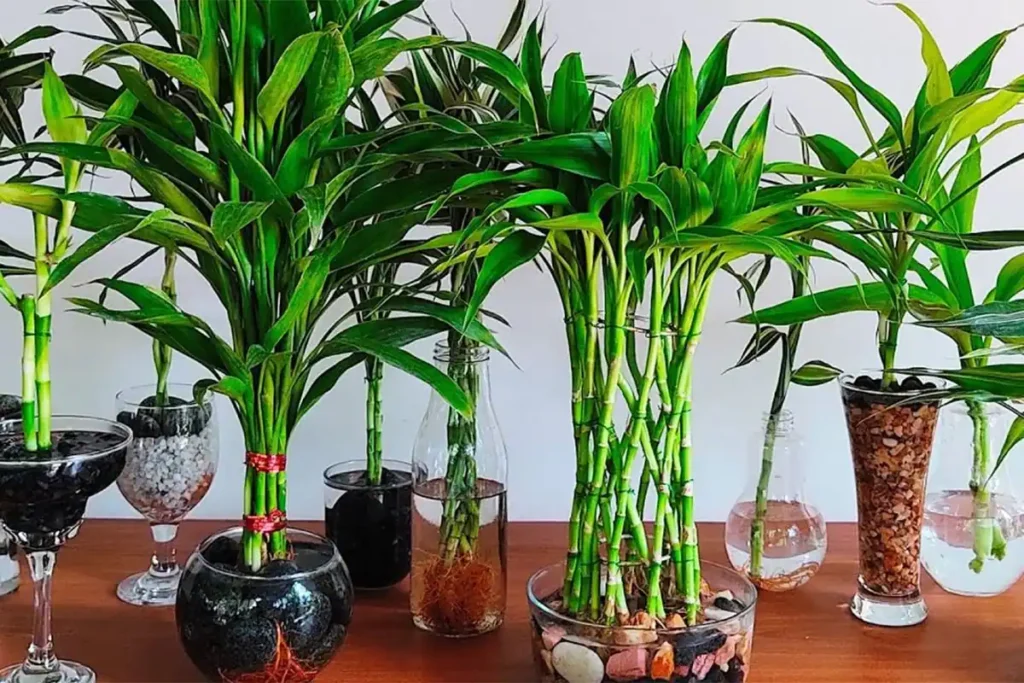
Symbolizing good fortune, Lucky Bamboo can grow in water or soil, requiring minimal care.
- Watering: Standing water in soil can cause root rot, while dirty water in hydroponic setups can lead to algae and mold.
- Pros: Considered a Feng Shui plant, often gifted for positive energy.
- Cons: Chlorine and fluoride in tap water can damage leaves, causing yellowing. Using filtered or distilled water is best.
14. Air Plants
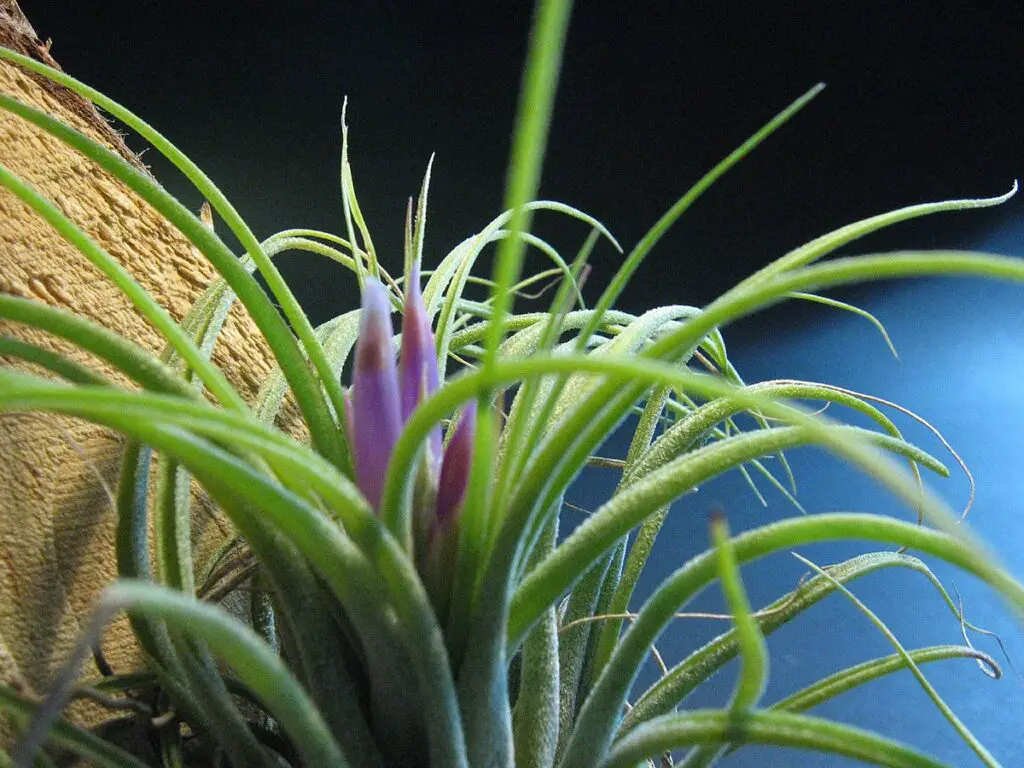
Unique and soil-free, Air Plants absorb moisture from the air, making them perfect for creative, space-saving displays.
- Watering: In humid environments, watering frequency can be reduced. Conversely, in dry conditions, more frequent misting or soaking may be needed.
- Pros: Comes in various shapes and textures, adding a modern, artistic touch to home decor.
- Cons: Unlike true succulents, air plants require regular soaking and misting to stay hydrated.
15. English Ivy
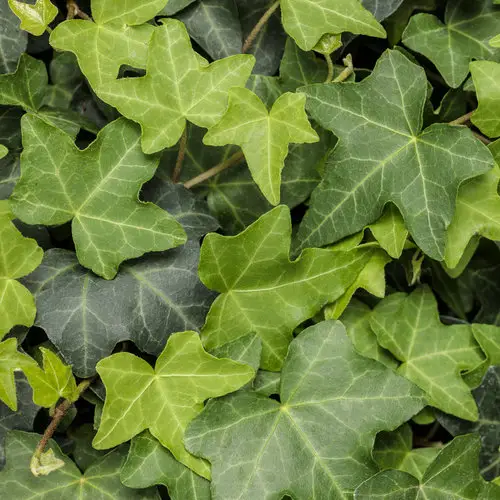
A trailing plant that works well in small spaces, English Ivy adds greenery to shelves, hanging baskets, or vertical gardens.
- Watering: Keep soil slightly damp, but avoid letting the plant sit in standing water.
- Pros: Helps remove toxins like formaldehyde, benzene, and mold spores from indoor air.
- Cons: Can spread aggressively if not pruned regularly, especially outdoors.
16. Cherry Tomatoes
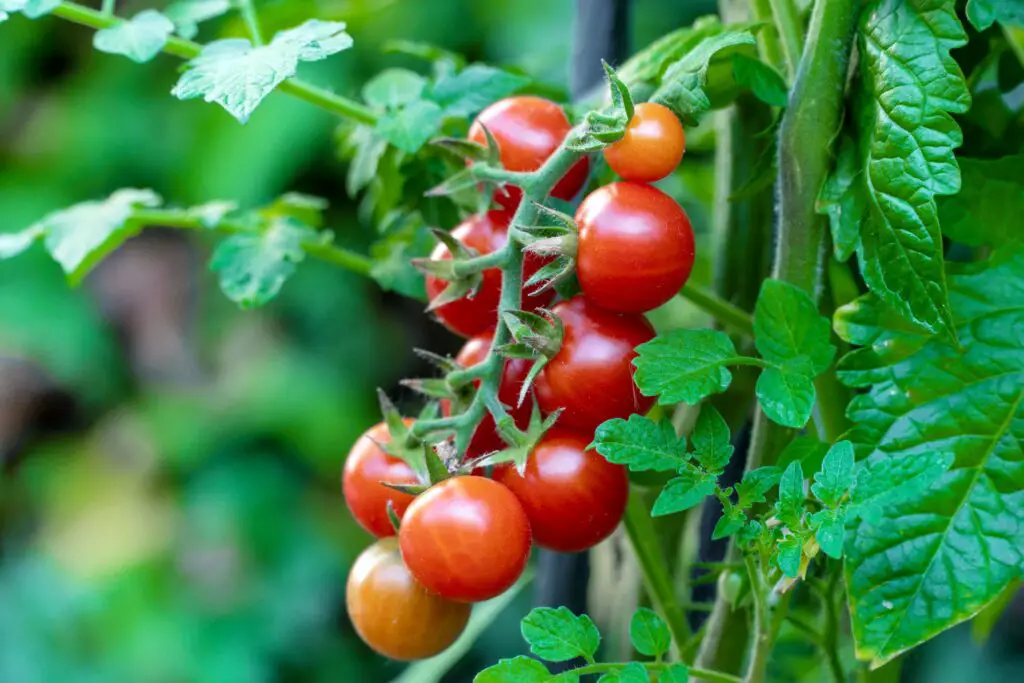
Compact and perfect for small spaces, these plants produce fresh, sweet fruit in just a few months. They thrive in containers and sunny spots.
- Watering: Keep the soil evenly moist, especially during fruiting. Water when the top inch of soil feels dry, but avoid waterlogging.
- Pros: Perfect for small spaces, patios, or containers, providing fresh tomatoes even in limited areas.
- Cons: Cherry tomatoes can attract pests like aphids, whiteflies, and spider mites, requiring regular monitoring and pest control.
17. Chili Peppers
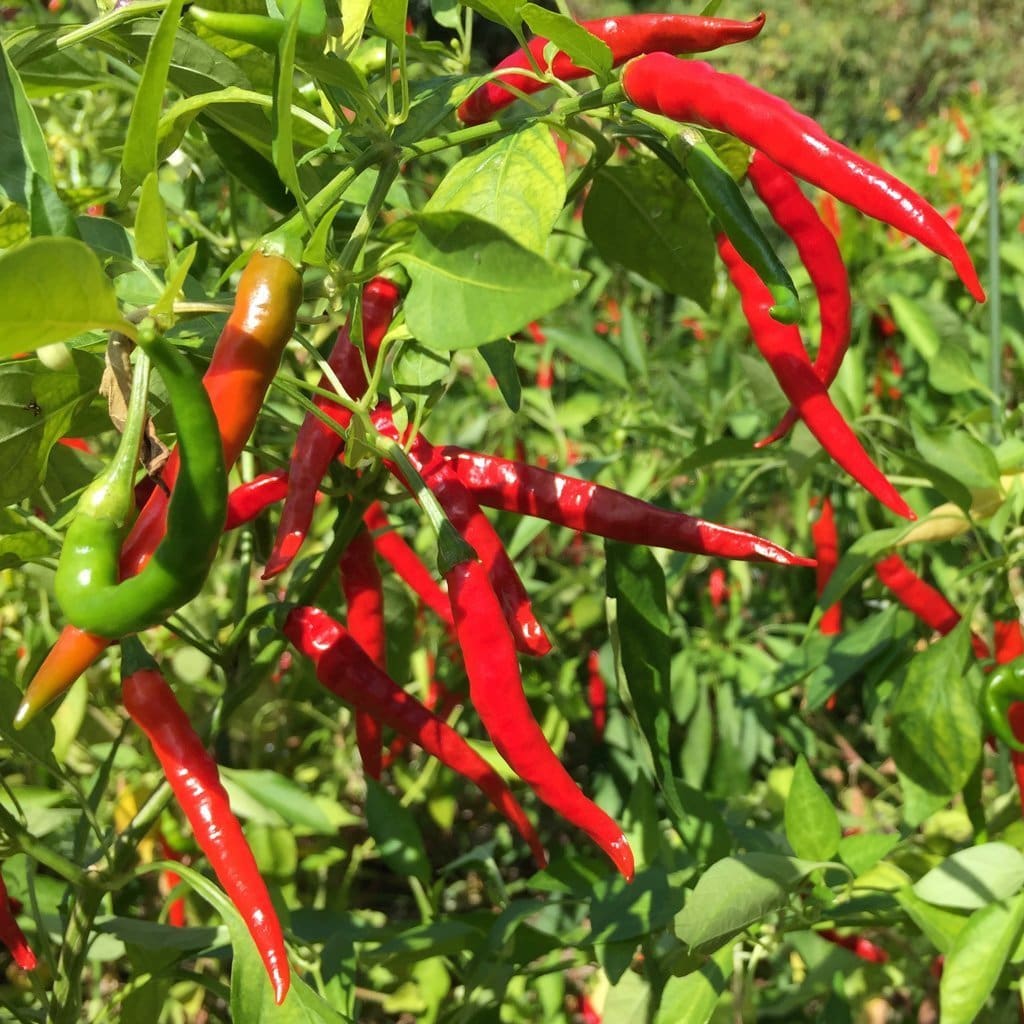
Adds spice to your meals and grows well in pots or on windowsills, offering an abundance of fiery peppers.
- Watering: Chili peppers need evenly moist soil, especially during the fruiting stage. Water when the top inch of soil feels dry.
- Pros: Home-grown chili peppers are full of flavor and heat, adding fresh spice to your dishes.
- Cons: Too much heat or sudden temperature changes can stress the plant, causing it to drop flowers or fruit.
18. Lettuce
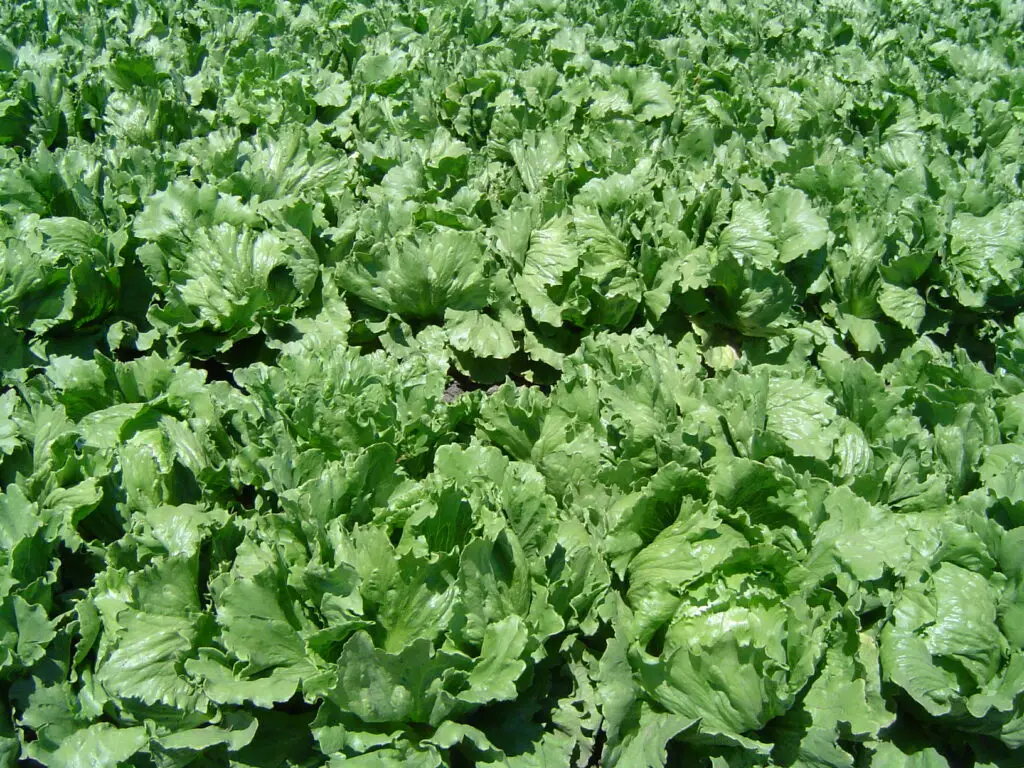
Quick-growing and easy to harvest, lettuce can be grown in small containers, providing fresh greens for salads and sandwiches.
- Watering: Lettuce prefers consistently moist soil but not waterlogged. Water when the top inch of soil feels dry.
- Pros: Lettuce is one of the quickest vegetables to grow, with harvests possible in as little as 30 days for baby leaves.
- Cons: Lettuce tends to bolt (go to seed) in hot weather, resulting in bitter leaves. Best grown in cooler temperatures.
19. Green Onions
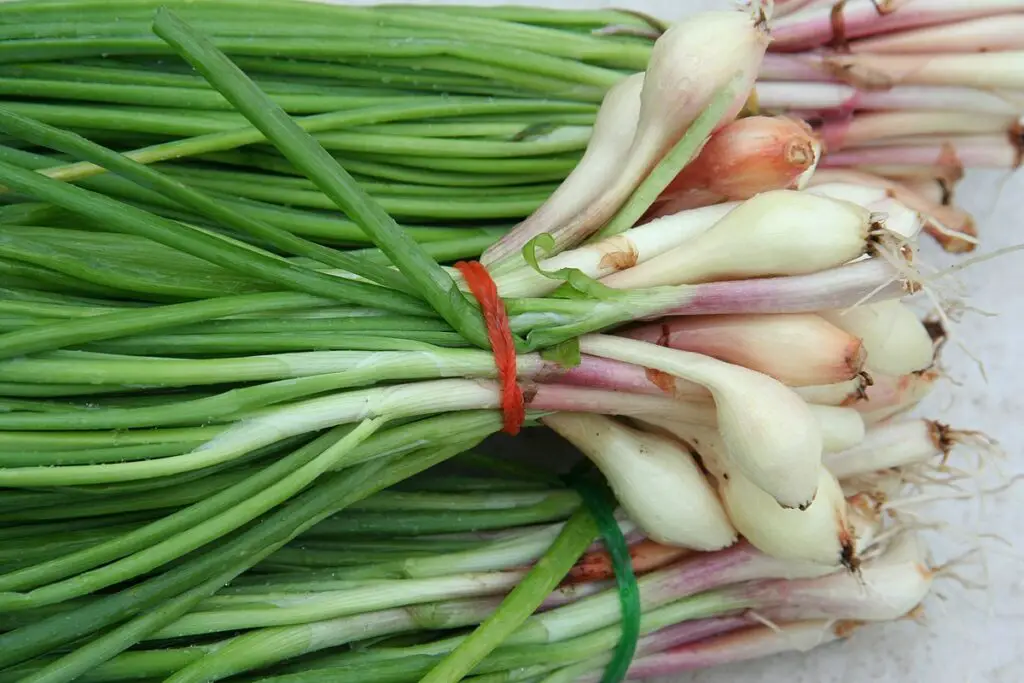
Regrow in water from kitchen scraps, making them a convenient and sustainable addition to your kitchen garden.
- Watering: Green onions don’t like sitting in waterlogged soil, so ensure good drainage if growing them in containers.
- Pros: Green onions can be regrown indefinitely from kitchen scraps placed in water, making them a low-cost, sustainable option.
- Cons: Green onions grown in water may begin to degrade or yellow after a while, requiring regular replacement of the water and trimming.
20. Lemon Tree (Dwarf Variety)
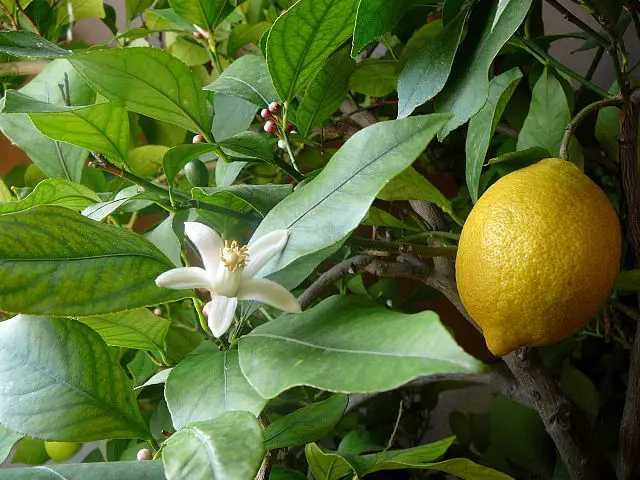
Fragrant and ideal for indoor growing, dwarf lemon trees produce citrus fruits, adding a burst of freshness to your home.
- Watering: Water deeply to encourage deep root growth, but allow the top layer of soil to dry out between waterings.
- Pros: Ideal for indoor spaces, the dwarf variety can be grown in containers on windowsills or patios.
- Cons: Lemon trees prefer warm conditions and are sensitive to drafts or sudden temperature changes.
Incorporating plants in your kitchen offers numerous benefits, from improving air quality to providing fresh herbs, vegetables, and fruits for your meals. Indoor plants like basil, mint, and green onions not only enhance the aesthetic of your kitchen but also make cooking more convenient, saving trips to the grocery store and adding vibrant flavors to your dishes. Additionally, plants can contribute to a calm and inviting atmosphere, promoting better overall well-being.
Tips on Placement and Care:
- Maximize Space: Choose compact, space-saving plants that thrive in small areas such as windowsills, countertops, or hanging baskets.
- Light Requirements: Place plants where they’ll get adequate light—most herbs and vegetables need at least 6 hours of indirect sunlight daily.
- Proper Watering: Ensure plants receive the right amount of water; overwatering and underwatering can both lead to plant stress.
- Use Containers: For plants like tomatoes or chili peppers, use containers with proper drainage to avoid root rot and to control their growth in limited space.
Starting small is key—begin with one or two easy-to-care-for plants, such as a basil or a green onion, and gradually expand your indoor garden as you become more confident in your gardening skills.
Whether you’re looking to grow fresh herbs for your cooking or simply want to add a bit of greenery to your kitchen, it’s a rewarding and simple way to enhance your space. Happy gardening!
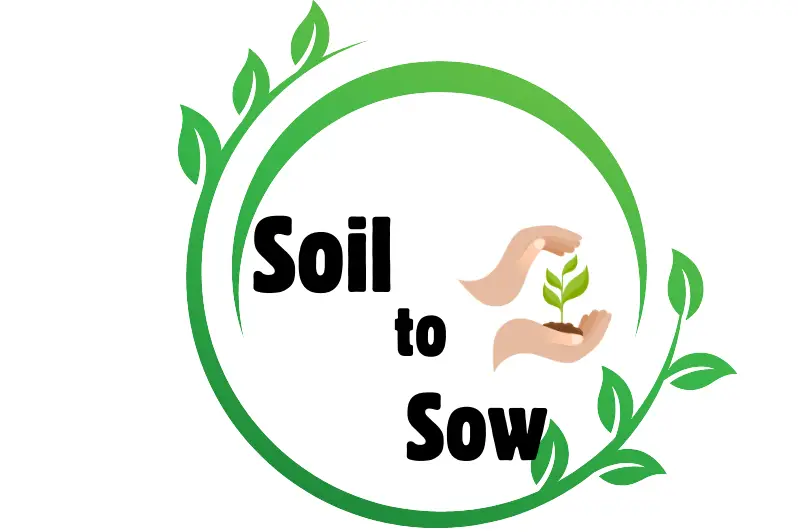
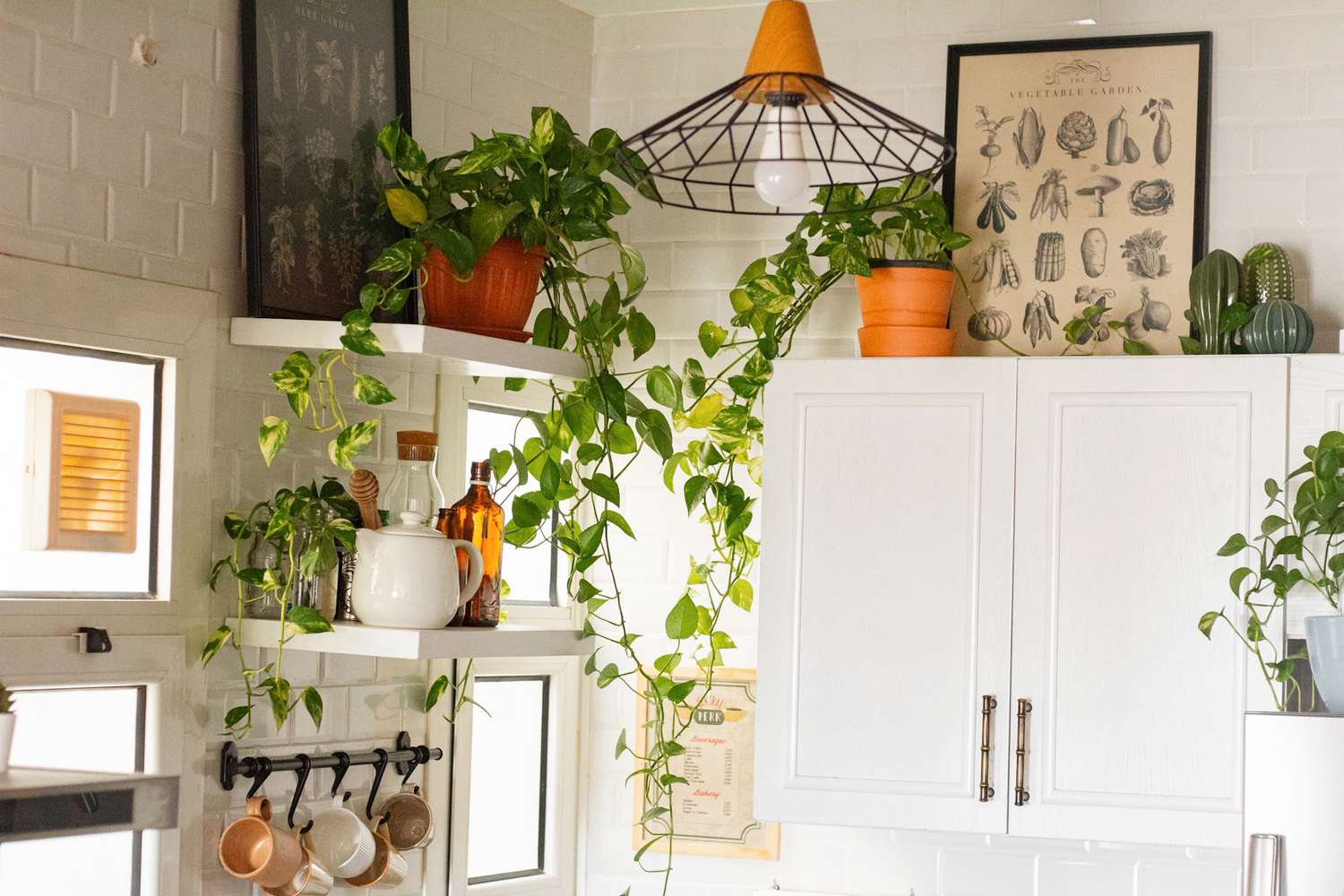
2 thoughts on “20 Best Plants for Your Kitchen: Indoor Kitchen Plants”